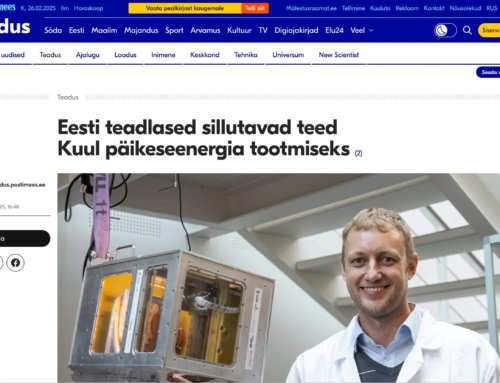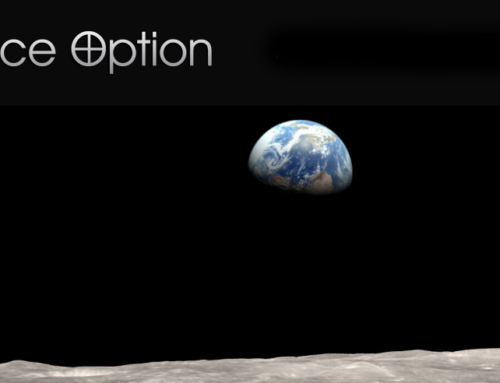Astrostrom was represented by Dr. Patrick Collins at the International Conference on Energy From Space which took place in London, 17-19 April 2024. Patrick delivered two presentations and participated in a round table discussion on Policy and Collaboration on Tuesday April 18.
The first presentation was: Advantages of Equatorial Orbits for SPS Demonstrator Satellites
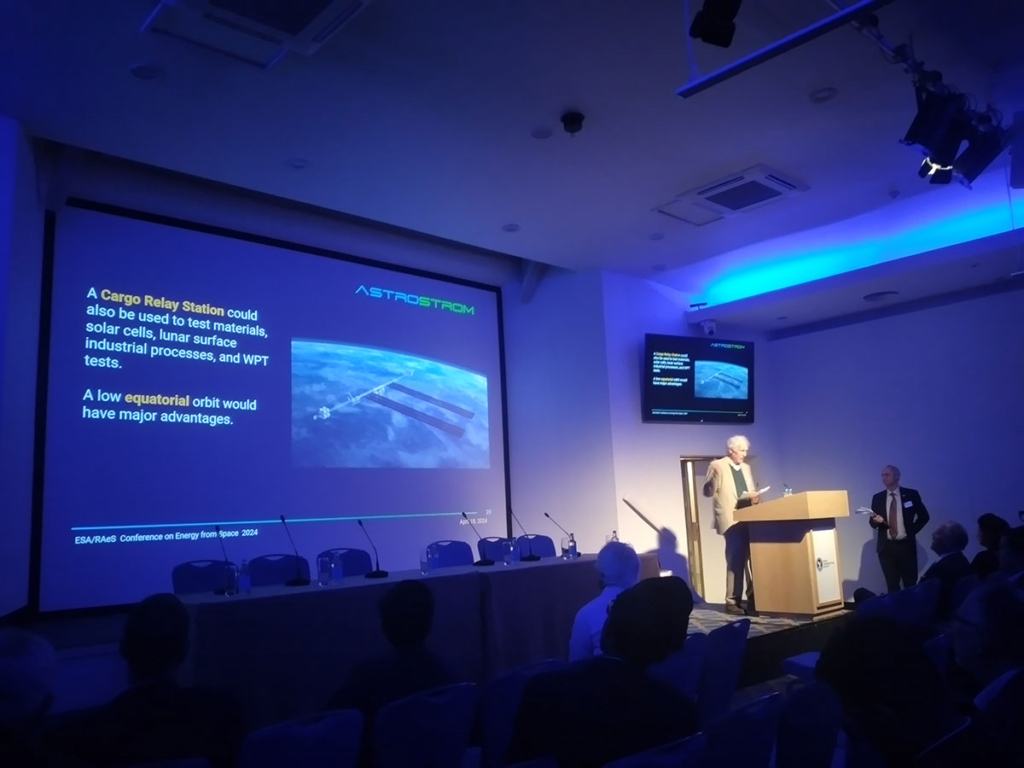
Developing solar power satellites (SPS) as a major energy source for Earth will involve multiple orbital demonstrators. Satellites in low Earth orbits will have far lower costs than demonstrators in geostationary orbit (GEO), but they have the major disadvantage that they can deliver power to a rectenna for only a few minutes, and only once every few days.
However, equatorial orbits offer the unique ability to deliver power to the same rectennas about 16 times every day. The most famous example was the ‘SPS2000’ multi-MW demonstrator satellite project, which won the ‘SPS91’ prize as the best proposal. This system would be an ’operational demonstrator’, supplying many actual customers now living without electricity in the ‘Global South’. This study led on to the ’SPS2000 and Beyond’ concept of multiple international teams developing a growing number of ever larger satellites in ever higher equatorial orbits servicing a growing number of ever larger rectennas progressively further from the equator.
An Ariane 6 equipped with the ‘Susie’ reusable upper stage launched from the European equatorial launch site at Kourou would be able to deliver cargo and crew to equatorial orbits. The unique logistical benefit of enabling return-flights to-and-from orbital facilities every 90 minutes is a huge potential advantage for a European space energy industry. Most recently, a multi-purpose equatorial orbit platform has been identified as a key piece of the infrastructure needed for the Greater Earth Lunar Power Station (GE⊕-LPS), a prototype SPS studied for ESA by Astrostrom GmbH to supply microwave power to the lunar surface using lunar materials as far as possible and eventually for manufacturing lunar-sourced SPS components for terrestrial energy generation. Once this capability is developed, it will greatly reduce the mass needed to be launched from Earth to assemble SPS units, and thereby enable SPS capacity to grow rapidly to large scale.
The main advantages of this proposal are:
- Equatorial orbits are logistically uniquely convenient: launch windows to and from facilities every 90 minutes.
- Rendezvous within minutes after take-off.
- Easy access to all low equatorial orbits.
The second presentation was: A PPP for SBSP, Astrostrom’s proposal to create an international Public-Private Partnership (PPP) to enable SBSP.
Implementing Space-Based Solar Power (SBSP) will require substantial financial investment. With projected costs on the order of one hundred billion Euros to develop and implement SBSP on the scale necessary and in a suitable time frame to meet urgent climate and energy goals, a multi-national approach is deemed necessary. Astrostrom proposes the creation of a Public-Private Partnership (PPP) to enable SBSP. The primary goal of the Public-Private Partnership is to efficiently provide an inexhaustible supply of environmentally clean energy to the entire world in an equitable, economical, and socially just manner.
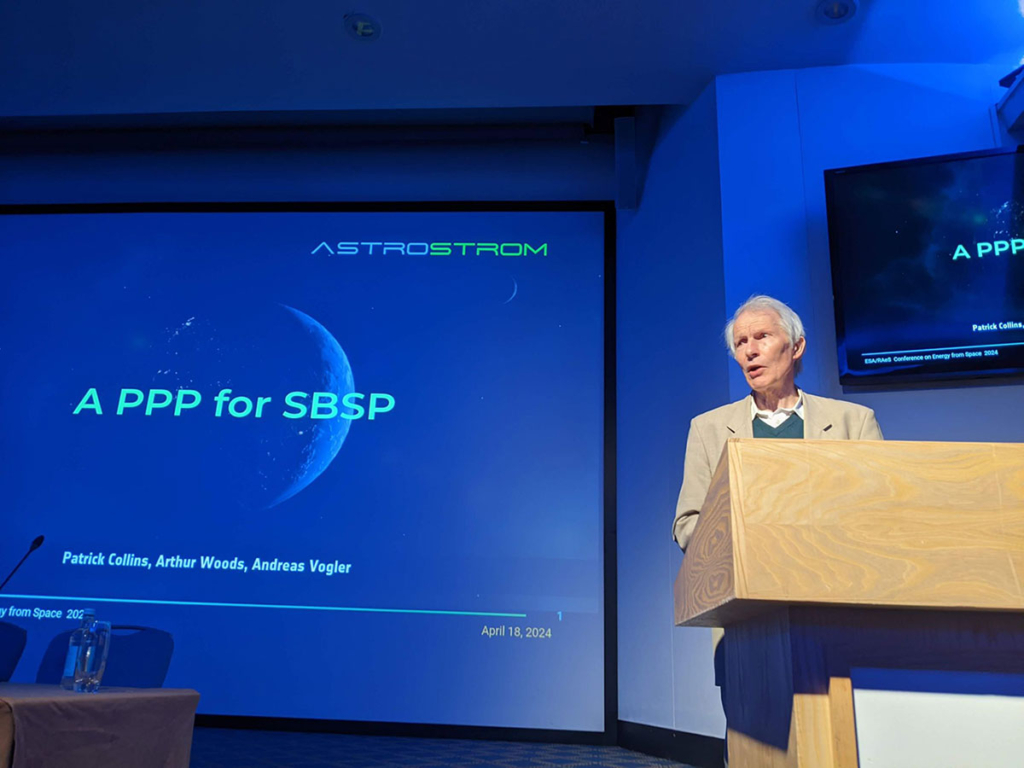
The public entity – the Greater Earth Energy Organisation (GEEO) – represents an autonomous multi-national treaty organisation consisting of nation-stakeholders, independent of any other governmental organisation or influence, with a mutual interest to achieve energy security while reaching climate goals. The Greater Earth Energy Organization will consist of member governments that desire energy security while simultaneously meeting their net-zero emission goals. To stimulate energy use responsibility, each member’s annual contribution to the GEEO will be determined by an efficiency coefficient that is based on its population and its per capita energy consummation and distributed on juste retour (fair return) principle. This approach would de-risk the initial investment while also allowing the GEEO to address the regulatory issues of spectrum allocation, orbital positioning, energy distribution issues, and compliance with international treaties and laws. As important, this collaborative global organization should become a catalyst for de-risking geopolitical tensions over the control and distribution of energy resources.
The private entity – Astrostrom – will comprise a consortium of Strategic Partners that will be responsible for setting-up and administering the GEEO, and then managing its research and development programmes. It will consist of a dedicated team of space experts and energy analysts that will prepare the rationale for convincing and enlisting the member nations to join the GEEO. Astrostrom AG and its strategic partners will then manage the technology development and implementation of SBSP as well as the administrative tasks of the GEEO consortium. For these services it will receive a percentage of the yearly GEEO generated revenues.
Our new video – A PPP for SBSP – was shown during Patrick’s presentation.
The Policy and Collaboration round table was moderated by Sam Alden from Space Solar Ltd. and included presentations by Robert Smith from the Space Studies Institute, Sean Mahoney from the Space Frontier Foundation, Matija Renčelj from the European Space Policy Institute and Patrick Collins from Astrostrom.
On day three, Dr. Tavvi Raadik from our strategic partner Tallinn University of Technology presented:
Space-Based Solar Power satellites manufactured on the Moon from lunar resources.
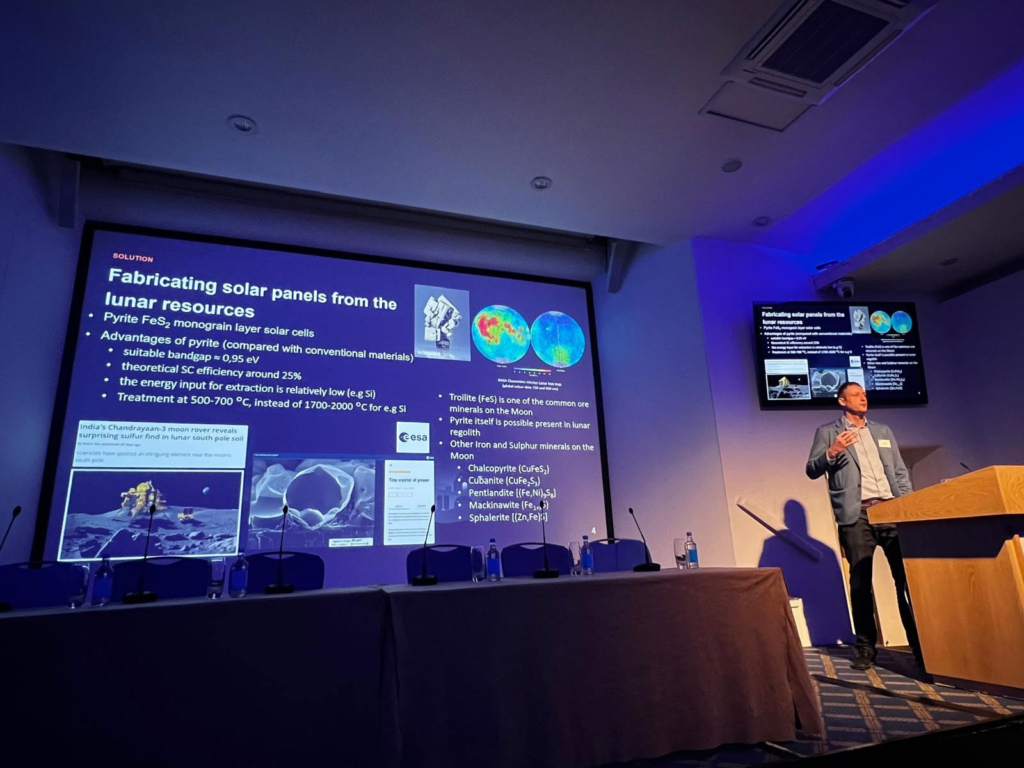
Space-Based Solar Power (SBSP) is a concept that has been studied for more than fifty years. Renewed interest in this technology is currently being researched around the world to address the emerging climate and energy crises. However, a remaining major obstacle to realizing clean energy from space is the logistical challenge of launching 100’s and eventually 1,000’s of rockets from the Earth’s surface to deploy solar power satellites (SPS) in geostationary orbit (GEO) that are more than one kilometre in diameter and weigh 1000’s of tonnes.
One innovative solution would be to manufacture SPS components on the Moon from lunar materials, which would greatly mitigate both the launch capacity bottleneck and the environmental impact of SBSP. This lunar approach to realizing SBSP could reduce the amount of mass for a SPS launched from Earth by 80% or more as well as reducing costs and the related CO2 emissions.
Three key elements for SPS manufacturing on the Moon have been identified: (1) automated production of multi-functional Monograin Layer (MGL) solar cells with an integrated wireless energy transfer unit, (2) cast lunar basalt and basalt fibre for the structural elements, and (3) a Lunar Space Elevator (LSE) – for transporting SPS components to the assembly location at the Earth-Moon Lagrange point 1 (EM-L1). A LSE could be constructed from known materials and technologies and is theoretically achievable today.
The pyrite based MGL solar cells will be manufactured from lunar troilite (FeS) that will be mined from the surface of the Moon and extracted by an electrostatic separation process. A layer of pyrite microcrystals will be used as the absorber of an MGL solar cell. In his presentation, Taavi showed the full cycle of SPS components manufactured on the Moon.
Tavvi’s presentation also included our jointly produced video that was first shown at the Luxembourg Space Resources Week 2024.
ASTROSTROM is seeking additional strategic partners and investors to establish the Greater Earth Energy Organisation (GEEO) to implement SBSP.
To find out how you can participate in this unprecedented opportunity, please send us an inquiry.





